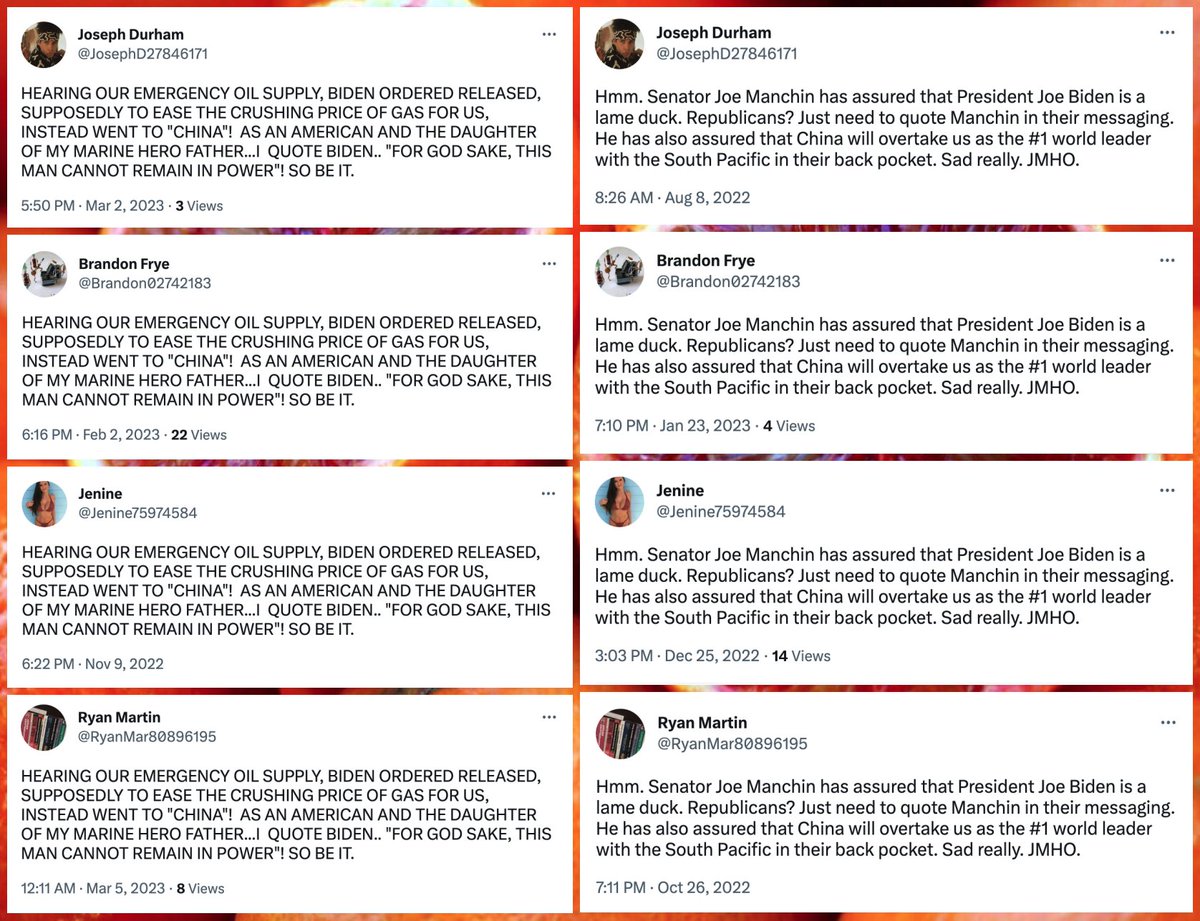It's a great day to look at a spammy network that's been tweeting repetitive political tweets for the last year. Plot twist: many of the spammy repeated tweets are anti-Biden, but the network mostly retweets pro-Biden accounts. #ThursdayAstroturf
cc: @ZellaQuixote
cc: @ZellaQuixote

This spam network consists of (at least) 1167 similarly-named accounts created between January 2022 and January 2023. Thus far, all of their tweets were allegedly tweeted via the Twitter Web App. 





For the first few months of 2022, the accounts in this network only retweeted, producing no tweets of their own. This changed in early May 2022; from that point forward, the network posted roughly equal numbers of tweets and retweets on any given day. 

The network's tweet content is highly repetitive, with many tweets duplicated verbatim by dozens or hundreds of accounts. Negative tweets about Joe Biden and China are a recurring theme, although other topics turn up as well. 

Despite the frequent anti-Biden stances seen in the network's own (repetitive) tweets, the network retweets a lot of pro-Biden accounts (including @JoeBiden himself). There are a few exceptions, such as @Jim_Jordan, @dbongino, and @elonmusk. 

Tweets and retweets make up 99.9% of this network's content. The remainder is a mix of empty quote tweets (possibly a glitch in automation or a human spammer accidentally hitting quote tweet instead of retweet) and repetitive pro-Serbia replies from a handful of accounts. 



As is often the case with spammy astroturf networks, many of the accounts in this network use plagiarized profile photos. TinEye and Google were roughly equal in their ability to track down other occurrences of the images used by the accounts in the network. 

• • •
Missing some Tweet in this thread? You can try to
force a refresh































